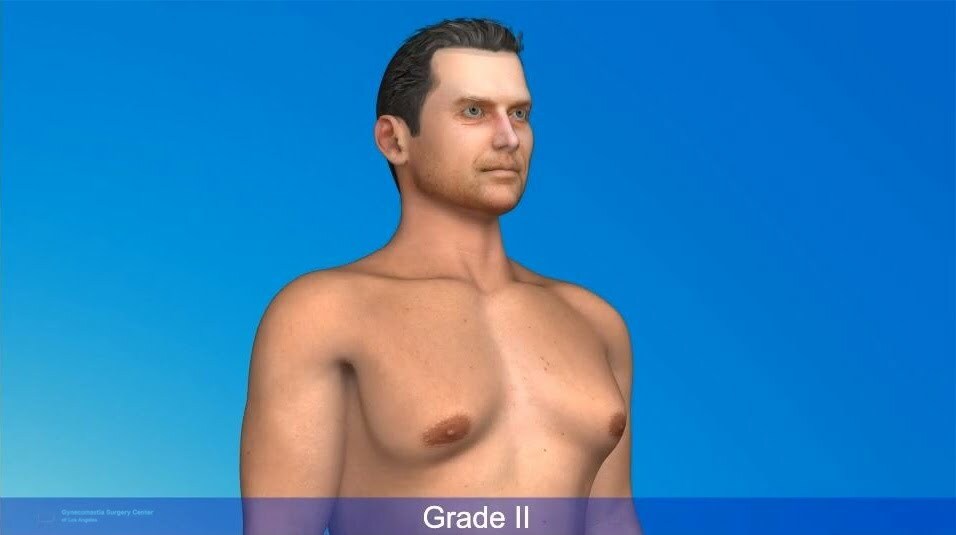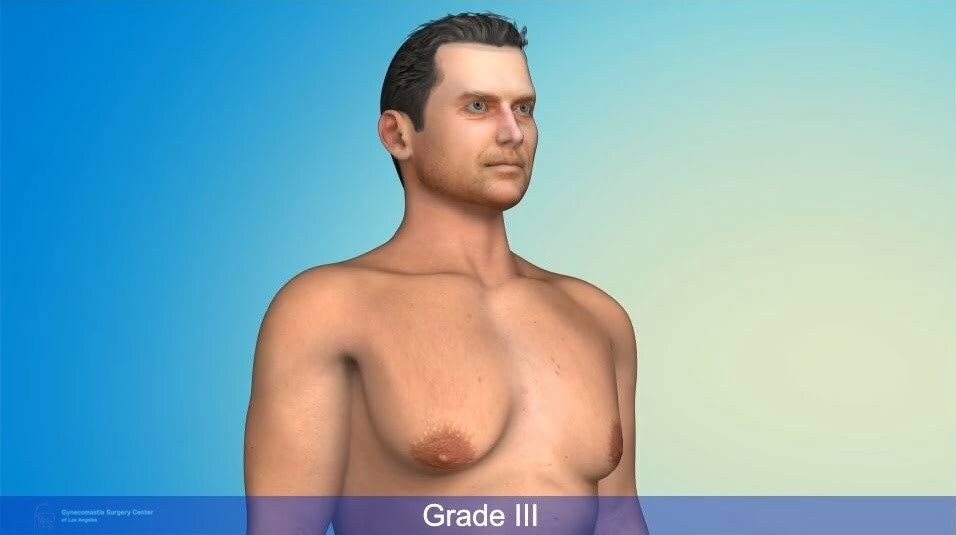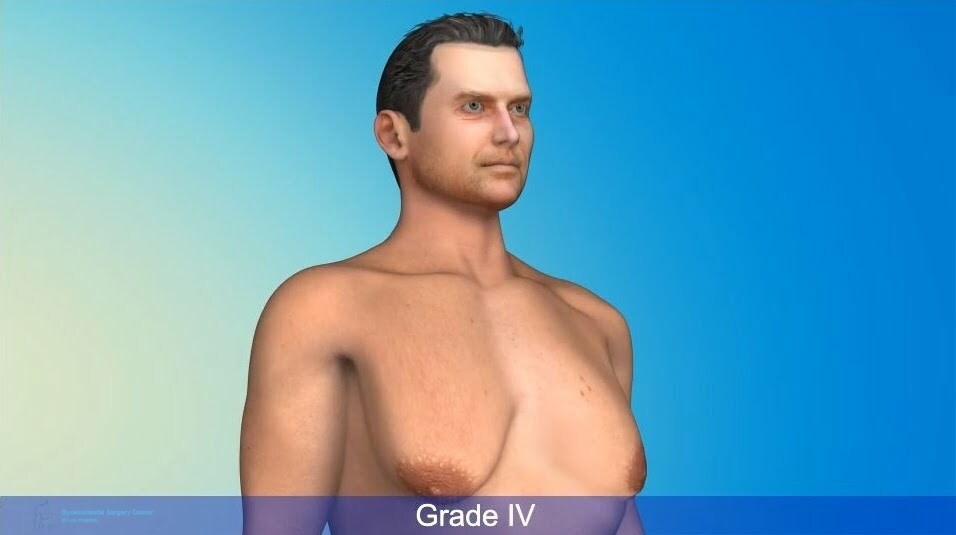Introduction to Gyno Grades Los Angeles, CA
Gynecomastia is an embarrassing condition that is more common than people think specially those who are under Gyno grades. Around 65% of all men will experience gynecomastia in their lifetimes. The condition is referred to by many names, some of them downright crude (the term “man boobs” comes to mind).
Characterized by excessive breast growth, gynecomastia can affect infants, teen boys, and older men. In many cases, the condition will go away on its own within two years. When the condition persists, the appearance of female-like breasts can lead to diminished self-esteem. Gynecomastia surgery is the only way to permanently treat the condition, which has many causes.
Causes of Gynecomastia
The condition is typically caused by an imbalance between the male and female hormones (testosterone versus androgens), leading to excess breast growth. Other causes include prescription drugs, illicit drug use, steroid abuse, and some diseases.
Gynecomastia Grades LA, CA
Gynecomastia comes in various degrees of severity, which doctors refer to as types and grades. Some men have minor gyno while others have severe gynecomastia that mimics female breasts. The type and grade a male is diagnosed with will determine the proper course for treatment
Grade 1 Gynecomastia
Mild – Small Breast Enlargement without Excess Skin
Boys and men with grade one breast growth have localized tissue behind the areola. The skin quality is usually good. Puffy nipples are sometimes present. There may be a slight amount of breast growth that sticks out from the chest area. Men with grade one gynecomastia can sometimes hide the condition with clothing but not always. Breast reduction surgery, otherwise known as gynecomastia surgery, can be a solution when the breast growth persists. Surgery can also help to treat any psychological issues that become present on account of the breast growth condition. For grade one gyno, surgery tends to produce very successful outcomes

Grade 2 Gynecomastia
Moderate – Medium Breast Enlargement without Excess Skin
Grade two gynecomastia is only slightly more severe than grade one. The condition is characterized by breast growth that extends broadly across the chest. There may be fatty tissue present along with glandular tissue. Grade two gyno can be very noticeable in T-shirts, which can contribute to psychological and social issues. The best treatment for grade two tends to be breast surgery reduction. This consists of mammary gland incision and liposuction to remove excess fat. As with grade one, surgery tends to produce favorable results.

Grade 3 Gynecomastia
Moderate – Medium Breast Enlargement with Excess Skin
Grade three gynecomastia bears a similarity to grade two with extra skin also present. Men with grade three gyno have lost skin elasticity, which causes the skin around the chest to become loose and saggy. Grade three gynecomastia usually contains both fatty tissue and glandular tissue along with excess skin that is very noticeable, even when clothed. Surgery is the only form of treatment that can treat grade three gynecomastia, which can produce more masculine results.

Grade 4 Gynecomastia
Severe – Major Breast Enlargement with Excess Skin
Grade four gynecomastia is severe enough to make the chest appear feminized. Grade four gyno is characterized by significant enlargement, skin laxity, and excess skin, which gives off the appearance of female breasts. We usually see this severity in aging men with poor skin quality. Surgery is the only form of treatment that can reduce the male breasts to a more normal contour

Unilateral vs Bilateral Gynecomastia
During a gynecomastia diagnosis, the doctor or gynecomastia surgeon will determine if the condition appears in one breast or both breasts. Unilateral gynecomastia signifies that asymmetry is present, which means only one side of the chest is affected. Bilateral gynecomastia signifies that symmetry is present, which means that both sides of the chest are equally affected. In some cases of bilateral gyno, one side of the chest appears larger or more severe than the other.
True Gynecomastia vs. Pseudogynecomastia
When diagnosing gynecomastia, doctors will identify the cause of the condition to determine the type of treatment needed. True gynecomastia is classified as excess glandular tissue, which causes enlarged breasts. Pseudogynecomastia is composed of mainly fat, not glandular breast tissue. Men who are overweight or obese typically have pseudogynecomastia.
How is Gynecomastia Diagnosed?
To provide an accurate diagnosis for gynecomastia, a physical examination will be conducted by a board-certified cosmetic surgeon who specializes in gynecomastia. This exam is necessary to determine the cause of the condition, grade, and best treatment for permanent correction.
How Do Gynecomastia Grades Form?
Male breast growth expands due to the same mechanisms that cause female breasts to grow – a hormonal imbalance. When female androgens overtake male testosterone in the body, the result is larger breasts. Hormones fluctuate naturally during puberty, which can lead to gynecomastia during a boy’s teenage years. Other reasons for the imbalance of hormones include illegal drug use, steroid abuse, and some underlying conditions. Medications can also lead to breast growth in some cases.
The various grades of gynecomastia form due to:
Age-Related Factors
Older men tend to lose skin elastin and collagen, which results in droopy or saggy skin. Men also tend to lose testosterone to increasing degrees past age thirty. The result of these two factors combined can lead to moderate or severe gynecomastia in older men.
Genetic Factors
When gynecomastia runs in families, boys and men from that genetic line are at an increased risk of forming the condition.
Weight Related Factors
Both male and female breasts are largely composed of adipose tissue, otherwise known as fat. Gaining weight can make gynecomastia more pronounced. When weight gain becomes severe, the skin loses elasticity, which can produce the appearance of saggy breasts.
Environmental Factors
Engaging in unhealthy habits like drug use, steroid abuse, and getting too much sun exposure can further sap the skin of vital components like elastin and collagen. The worse your skin quality, the greater amount of sag you can experience, which can exacerbate the appearance of male breast growth.
Is Gynecomastia Surgery Necessary?
Now that you know more about gynecomastia grades, you may wonder about surgery. While the condition can go away on its own in some cases, surgery is usually required when the condition persists.
You may be hesitant to consider surgery, which is understandable. Having surgery is a major decision that should not be taken lightly.
One question that patients often ask is: Can gynecomastia harm your health? The answer is that the condition can harm your health if the breast growth is caused by something that isn’t necessarily gynecomastia. An example would be breast cancer. This is why it is always helpful to receive an official diagnosis from a gynecomastia specialist to rule out things like breast tumors and other ailments that can mimic male gyno.
Gynecomastia itself will usually not be harmful. That is, unless the male breasts rub against skin, which could eventually form rashes that can then become infected. The male breasts may also tug on the muscles that support your neck and back, which can lead to poor posture and other harmful outcomes.
You may develop psychological pain that comes with having male breasts. With a diagnosis, you will come to understand the grade of gynecomastia you have, and the best form of treatment. The best type of treatment we currently have is gynecomastia surgery.
How Does Gynecomastia Surgery Permanently Correct Male Breast Growth?
Surgery is the best method we currently have for permanently correcting the condition of excess male breast growth. Otherwise referred to as male breast reduction, it can be tailored to the male patient depending on the grade and cause of the condition.
A combination of liposuction, tissue excision, and minimally invasive gland removal are used to varying degrees. General anesthesia is also used to ensure you remain unconscious for the duration of the procedure.
For grade one gynecomastia where gyno nipples (puffy nipples) are present, the surgeon can reposition and resize the areolas to create symmetry around the chest.
Liposuction is often used for all grades of gynecomastia to remove fatty tissue and shrink the chest to a more masculine size and shape.
Only gland removal can permanently eradicate the breast growth that is present with all four gynecomastia grades. Once the glandular tissue is removed, regrowth is unlikely. Engaging in the same behaviors that caused the condition, such as steroid abuse, can lead to the need for follow-up surgery.
In severe cases, where excess skin is also present, skin excision removes the added tissue to leave the chest flat and symmetrical.
Due to advances in male breast surgery techniques and technology, the incisions used during surgery are small, which leaves nearly hidden scars. The result of surgery leaves the chest appearing natural, with improved results over time.
Bruising and Swelling
You can expect to see bruises and swollen tissue around the surgical site following surgery. This is normal and is a result of the trauma inflicted during the procedure. Any time tissue is cut or manipulated, bleeding, bruising, and swelling can result. Your doctor will instruct you on how to properly care for the surgical site to prevent infection until the area is fully healed. You can also be proactive by adopting certain habits after surgery that can keep bruising and swelling, as well as discomfort, to an absolute minimum.
Stay Hydrated
It is crucial that you remain hydrated during the recovery process. If you are hydrated, your body may try to retain water, which can exacerbate swelling. To keep swelling to a minimum and initiate rapid healing, drink at least eight cups of water each day.
Sleep Well
The quality of your sleep will also determine how quickly and how well you heal. Getting a full night’s rest will rejuvenate your body and speed up the natural healing process. To improve the quality of your sleep, make sure you sleep in a cool, dark room without distractions for at least six to eight hours per night.
Sleep Elevated
The manner and position in which you sleep will help you heal faster during your recovery period. Try to sleep on your back with your upper body elevated to around 45 degrees. Sleeping this way ensures you won’t pull against the surgical site while you slumber. This sleep position also pulls blood away from the surgical site, which minimizes bruising.
Eat Healthy Foods
It’s easy to reach for comfort foods when recovering from surgery. You are far better off stocking your fridge and pantry with nutritional fare. If you want to keep bruising to a minimum, fill your plate with leafy greens, which are rich in vitamin K. These foods make your blood thicker, which can cut down on bleeding and bruising.
How Long Does Gyno Surgery Recovery Last?
You should be able to return to your normal activities within 2 to 3 weeks following surgery. You should refrain from engaging in heavy lifting for a few weeks at least, to prevent pulling against the surgical site. Your chest should be fully healed within six to eight weeks, depending on how quickly your body heals.
Are There Risks to Gynecomastia Surgery?
All surgeries come with risks. Male breast reduction surgery risks include the typical risks that come with the use of anesthesia, such as excess bleeding, infection, breast asymmetry, and an unfavorable outcome. You can prevent side effects by choosing your gynecomastia surgeon wisely. The best gyno surgeon for your case will be one who can show you before and after photos of gynecomastia surgery to prove they can restore your chest contours to a more normalized shape.
How Much Does Gyno Surgery Cost?
Surgery does not cost as much as you might suspect. The surgeon's fee for gyno surgery starts $4,239, according to the American Society of Plastic Surgeons. Compared to other cosmetic surgeries, gyno surgery is one of the least expensive and most patients end up satisfied with their results.
When you consider the boost of confidence you can gain from male gyno surgery and the increase in your quality of life, you will see that male breast reduction surgery is well worth it, no matter what your gyno grade.
Schedule a Discrete Consultation with Dr. Babak Moeinolmolki
Now that you know more about the various grades and causes of gynecomastia, are you ready to discuss permanent treatment? If you have been living with the condition, and it causes embarrassment and a diminished quality of life, Doctor Babak Moeinolmolki would like to meet with you.
Schedule a discrete consultation with Doctor Moeinolmolki by calling the Gynecomastia Center of Los Angeles. After a physical exam and discussion that revolves around your aesthetic goals, Doctor Moeinolmolki can help you determine the grade, cause, and best treatment for your condition. Call us at +1(310)861-3799 to begin the process.
Read More

